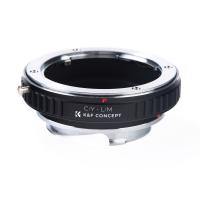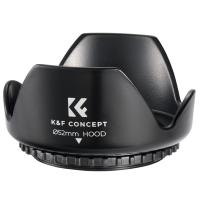What Type Of Microscopes Are There ?
There are several types of microscopes, including optical microscopes, electron microscopes, and scanning probe microscopes. Optical microscopes use visible light to magnify and observe samples. They include compound microscopes, which use multiple lenses to magnify the image, and stereo microscopes, which provide a three-dimensional view of the sample. Electron microscopes use a beam of electrons instead of light to create highly detailed images. Transmission electron microscopes (TEM) transmit electrons through the sample, while scanning electron microscopes (SEM) scan the surface of the sample. Scanning probe microscopes use a physical probe to scan the surface of the sample and create images at the atomic level. This includes atomic force microscopes (AFM) and scanning tunneling microscopes (STM). Each type of microscope has its own advantages and applications in various scientific fields.
1、 Optical microscopes
Optical microscopes are one of the most commonly used types of microscopes in scientific research and various other fields. These microscopes use visible light and lenses to magnify and observe small objects or samples. They have been instrumental in advancing our understanding of the microscopic world and have been widely used for centuries.
There are several types of optical microscopes, each with its own unique features and applications. The most basic type is the compound microscope, which uses two sets of lenses to magnify the sample. These microscopes can achieve magnifications of up to 2000x and are commonly used in biology and medicine.
Another type is the stereo microscope, also known as a dissecting microscope. This microscope provides a three-dimensional view of the sample and is often used for dissection, inspection, and assembly of small objects. It is commonly used in fields such as electronics, jewelry making, and forensic science.
In recent years, there have been advancements in optical microscopy techniques that have further expanded their capabilities. For example, confocal microscopy uses a laser to scan the sample and create high-resolution 3D images. This technique has revolutionized the field of cell biology and allows researchers to study cellular structures and processes in great detail.
Furthermore, super-resolution microscopy techniques, such as stimulated emission depletion (STED) microscopy and structured illumination microscopy (SIM), have pushed the limits of optical microscopy beyond the diffraction limit. These techniques enable researchers to visualize structures at the nanoscale, providing unprecedented insights into cellular and molecular processes.
In conclusion, optical microscopes, including compound microscopes, stereo microscopes, and advanced techniques like confocal and super-resolution microscopy, have played a crucial role in scientific research and various other fields. They continue to evolve and provide new ways to explore the microscopic world, enabling scientists to make groundbreaking discoveries and advancements in numerous disciplines.

2、 Electron microscopes
There are several types of microscopes used in scientific research and various fields of study. One of the most powerful and widely used types is the electron microscope. Electron microscopes use a beam of electrons instead of light to magnify and visualize samples at extremely high resolutions.
There are two main types of electron microscopes: transmission electron microscopes (TEM) and scanning electron microscopes (SEM). TEMs are used to study the internal structure of samples by passing a beam of electrons through them. This allows for detailed imaging of the sample's ultrastructure, such as the arrangement of cells, organelles, and even individual atoms. SEMs, on the other hand, provide a three-dimensional view of the sample's surface by scanning it with a focused beam of electrons. This technique is particularly useful for studying the surface morphology and topography of samples.
In recent years, advancements in electron microscopy have led to the development of new techniques and instruments. For example, cryo-electron microscopy (cryo-EM) has revolutionized the field by allowing researchers to visualize biological samples in their native, hydrated state. This technique involves freezing the sample rapidly to preserve its structure and then imaging it using an electron microscope. Cryo-EM has provided unprecedented insights into the structure and function of complex biological molecules, such as proteins and viruses.
Furthermore, there have been significant improvements in the resolution and speed of electron microscopes. The development of aberration-corrected electron optics has greatly enhanced the resolution, allowing for the visualization of even smaller details. Additionally, advancements in detector technology have enabled faster imaging, making it possible to capture dynamic processes in real-time.
In conclusion, electron microscopes, including TEMs and SEMs, are powerful tools used in scientific research. Recent advancements in electron microscopy, such as cryo-EM and improved resolution and speed, have expanded the capabilities of these instruments and opened up new avenues for scientific discovery.

3、 Scanning probe microscopes
Scanning probe microscopes (SPMs) are a type of microscope that allow scientists to observe and manipulate materials at the nanoscale level. They are used to study the surface properties of various materials, including metals, semiconductors, polymers, and biological samples. SPMs provide high-resolution imaging and can also measure properties such as conductivity, magnetism, and chemical composition.
There are several types of scanning probe microscopes, each with its own unique capabilities and applications. The most common types include atomic force microscopes (AFMs), scanning tunneling microscopes (STMs), and scanning near-field optical microscopes (SNOMs).
Atomic force microscopes use a tiny probe with a sharp tip to scan the surface of a sample. The probe interacts with the surface, and the resulting forces are measured to create a topographic image. AFMs can achieve atomic resolution and are widely used in materials science, nanotechnology, and biology.
Scanning tunneling microscopes work on the principle of quantum tunneling. A sharp tip is brought very close to the surface, and a small voltage is applied. Electrons can tunnel between the tip and the surface, and the resulting tunneling current is used to create an image. STMs are particularly useful for studying conductive materials and have been instrumental in advancing our understanding of atomic-scale phenomena.
Scanning near-field optical microscopes combine the principles of AFMs and optical microscopy. They use a tiny aperture or a nanoscale probe to scan the surface, allowing for high-resolution optical imaging beyond the diffraction limit. SNOMs are used to study optical properties at the nanoscale, such as plasmonics and nanophotonics.
In recent years, there have been advancements in SPM technology, such as the development of high-speed AFMs, which enable real-time imaging of dynamic processes at the nanoscale. Additionally, there has been progress in combining SPMs with other techniques, such as spectroscopy and microscopy, to provide more comprehensive characterization of materials.
Overall, scanning probe microscopes have revolutionized our ability to study and manipulate materials at the nanoscale. They continue to play a crucial role in various scientific disciplines and are instrumental in advancing nanotechnology and understanding fundamental properties of matter.

4、 Confocal microscopes
Confocal microscopes are a type of advanced optical microscope that have revolutionized the field of microscopy. They are widely used in various scientific disciplines, including biology, medicine, materials science, and nanotechnology.
Confocal microscopes utilize a laser beam to scan the specimen point by point, creating a three-dimensional image with exceptional resolution and clarity. Unlike traditional microscopes, which capture all the light that passes through the specimen, confocal microscopes use a pinhole aperture to eliminate out-of-focus light. This allows for the precise localization of fluorescently labeled structures within the specimen, resulting in sharper images and improved contrast.
One of the latest advancements in confocal microscopy is the development of super-resolution techniques. These techniques, such as stimulated emission depletion (STED) microscopy and structured illumination microscopy (SIM), enable researchers to surpass the diffraction limit of light and achieve resolutions down to the nanometer scale. This breakthrough has opened up new possibilities for studying cellular structures and processes at unprecedented levels of detail.
Another recent development in confocal microscopy is the integration of live-cell imaging capabilities. By combining confocal microscopy with advanced imaging technologies, such as spinning disk confocal or resonant scanning, researchers can now observe dynamic cellular processes in real-time. This has greatly enhanced our understanding of cellular behavior and has led to important discoveries in fields such as developmental biology and neuroscience.
In summary, confocal microscopes are a powerful tool in modern microscopy, offering high-resolution imaging, improved contrast, and the ability to study dynamic processes in living cells. With ongoing advancements in super-resolution techniques and live-cell imaging, confocal microscopy continues to push the boundaries of what is possible in the field of microscopy.



































